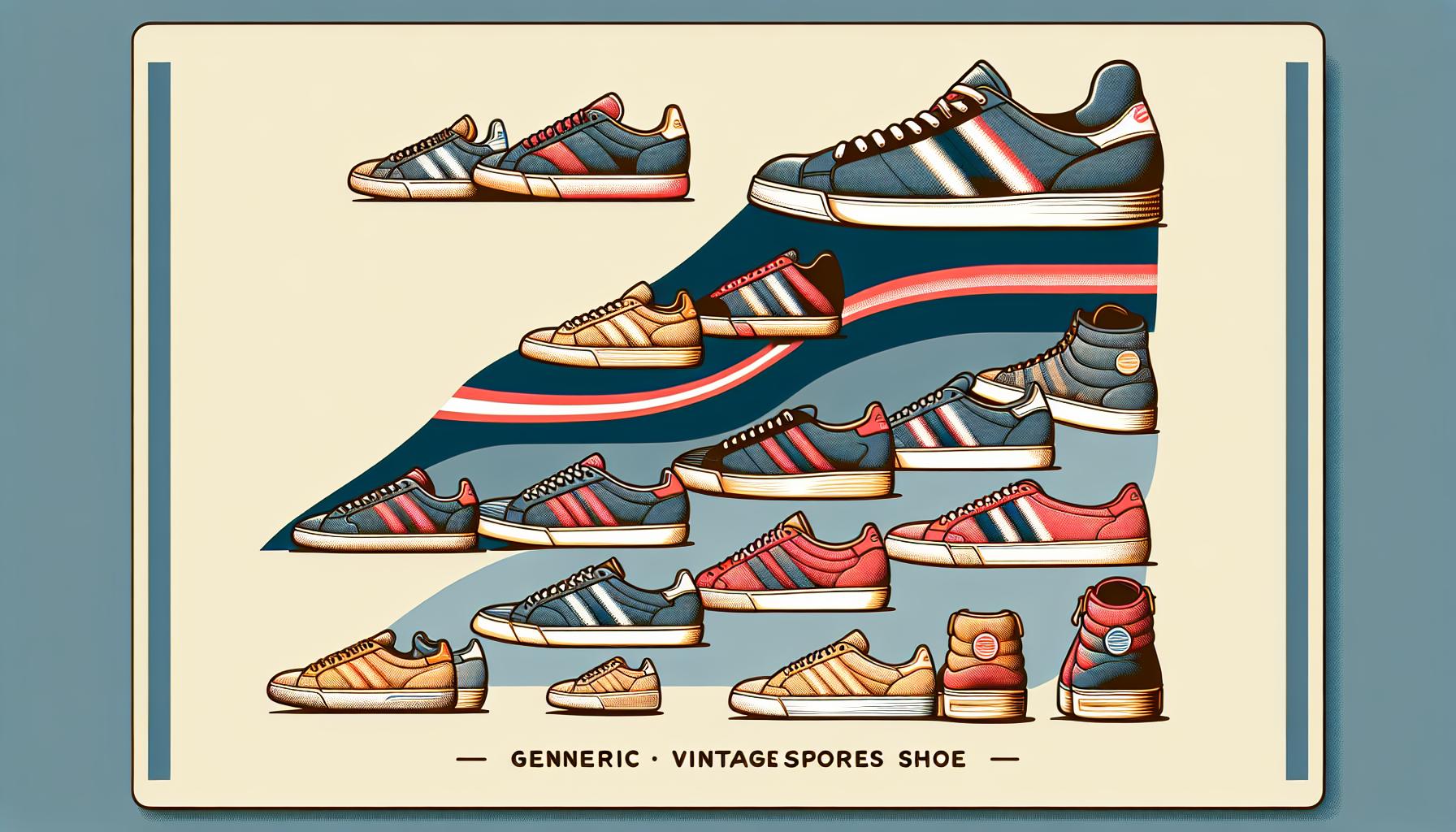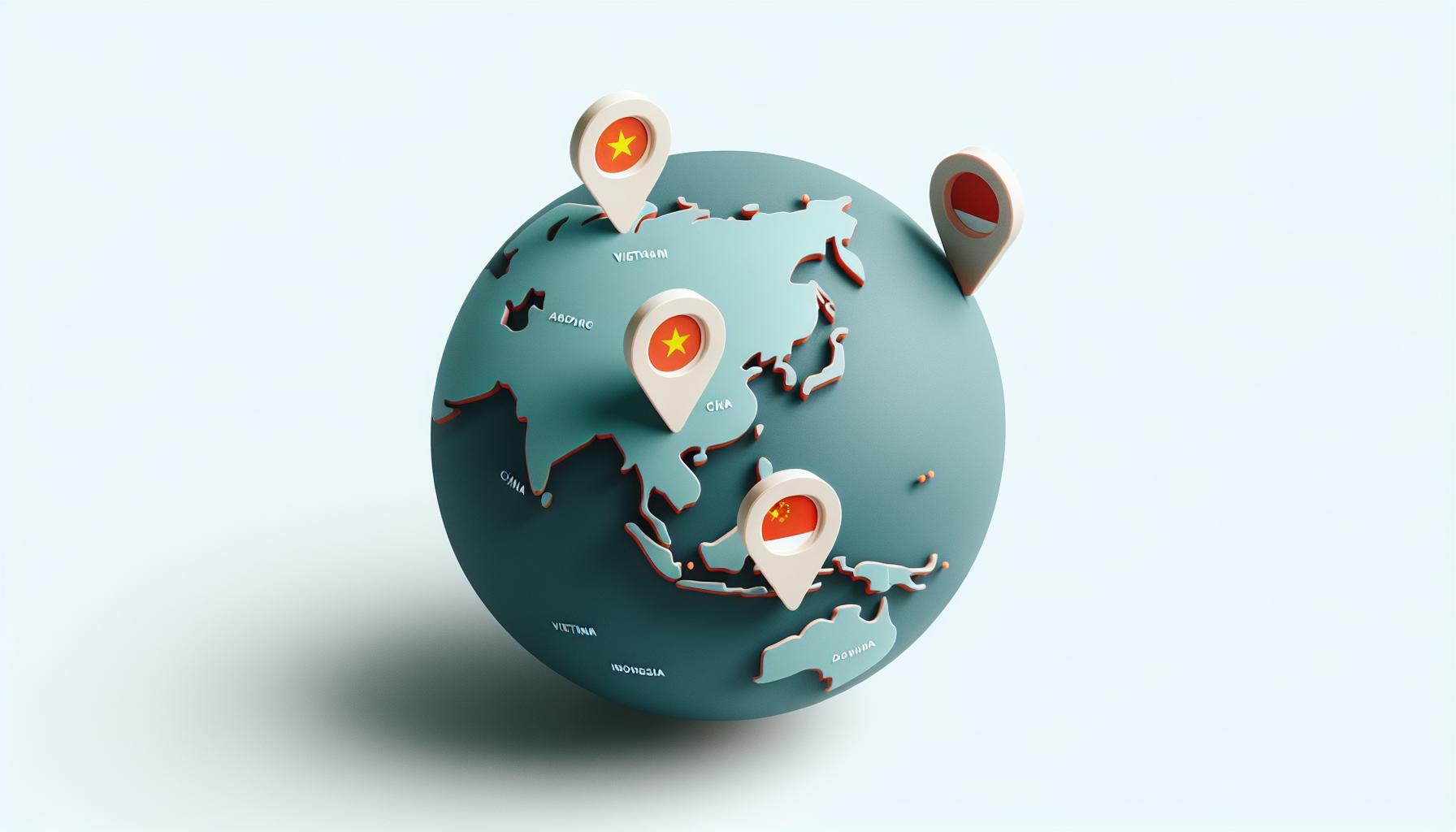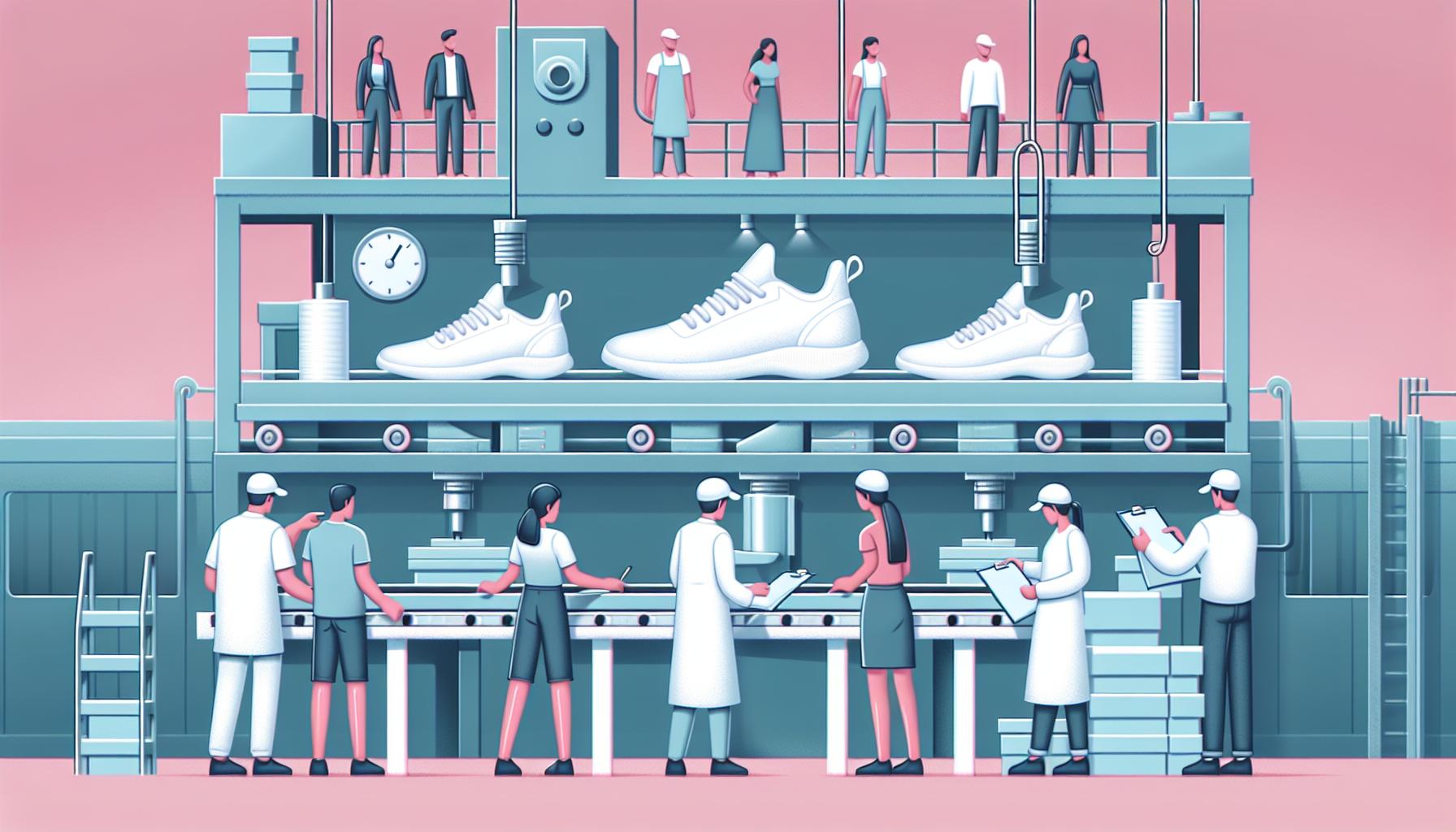Where Are Reebok Shoes Made? Discover Production Hotspots
As a long-time sneaker enthusiast and blogger, I’ve always been fascinated by the origins of our favorite footwear. Today, I’m diving into a question that’s sparked curiosity among many: Where are Reebok shoes made? It’s a topic that’s not only interesting but also sheds light on the global nature of shoe manufacturing.
Reebok, a brand synonymous with innovation and quality, has a rich history that spans across continents. Understanding where Reebok shoes come to life is crucial for fans and ethical consumers alike. So, let’s lace up and embark on this journey to uncover the birthplaces of some of the most iconic sneakers in the world.
Key Takeaways
- Global Manufacturing Footprint: Reebok shoes are primarily produced in Asia, with significant production facilities in Vietnam, China, and Indonesia. This geographic diversity aids in mitigating risks like trade tensions and labor shortages, ensuring a stable supply chain.
- Quality and Ethical Standards: Reebok enforces strict quality control measures and ethical standards, including no child labor, fair wages, and safe working conditions across all manufacturing sites, demonstrating a commitment to excellence and moral responsibility.
- Impact of Globalization: The globalization of Reebok’s production allows for greater economies of scale, access to diverse markets, and agility in supply chain management, although it also presents challenges in maintaining consistent quality and ethical practices.
- Craftsmanship and Innovation: The diverse locales of Reebok’s manufacturing—each with unique strengths, from Vietnam’s skilled labor to India’s raw material resources and China’s technological advancements—contribute to the brand’s ability to deliver high-quality and innovative footwear products globally.
The History of Reebok Shoes

In my journey to unveil where Reebok shoes are made, it’s pivotal to dive into the rich tapestry of its history. Founded in 1958 by brothers Joe and Jeff Foster in Bolton, England, Reebok’s story is one of innovation, ambition, and global expansion. What began as a small-scale operation, inspired by their grandfather’s legacy of crafting running shoes, evolved into a worldwide phenomenon.
My exploration led me to discover Reebok’s pivotal moments: transitioning from a UK-based company to capturing the global market in the 1980s. The brand’s strategic move to the international scene, particularly in the United States, catapulted it into a household name. This period marked the beginning of Reebok’s journey in manufacturing its products globally, driven by the desire to reach a wider audience and leverage global manufacturing efficiencies.
Intriguingly, Reebok’s impact on women’s fitness revolutionized the market with the introduction of the Freestyle aerobics shoe in the 1980s. This wasn’t just a shoe; it was a statement, contributing significantly to the brand’s identity and its global production strategy. The Freestyle’s success underscored the importance of understanding and catering to niche markets, a philosophy that guided where and how Reebok’s shoes were made.
As I delved deeper, it became clear that Reebok’s approach to manufacturing has always been forward-thinking. Adopting advanced technologies and partnerships across continents has allowed them to maintain a standard of quality and innovation. This global footprint not only speaks to Reebok’s adaptability but also highlights its commitment to meeting consumer demands worldwide.
Understanding Reebok’s storied past sheds light on its manufacturing decisions and global presence today. From its humble beginnings in England to becoming a brand synonymous with fitness and lifestyle globally, Reebok’s journey is a testament to its enduring legacy and ability to adapt to the evolving landscape of shoe manufacturing.
Reebok’s Manufacturing Locations

Diving into the heart of Reebok’s operations, it’s fascinating to see how its presence spans the globe. The majority of Reebok shoes are not confined to a single manufacturing hub. Instead, they’re produced in several key locations, each critical to the brand’s supply chain and delivery network. My research into the company’s manufacturing distribution offers a clearer picture of where Reebok shoes come to life.
Primarily, Reebok’s production pivots around Asia, with countries such as Vietnam, China, and Indonesia leading the charge. These nations have emerged as footwear manufacturing powerhouses, not just for Reebok but for the entire athletic shoe industry. The choice of these locations ties back to both economic and logistical advantages, including skilled labor, advanced manufacturing technologies, and efficient supply chains.
Here’s a snapshot of Reebok’s main manufacturing locations as of my last update:
| Country | Share of Production |
|---|---|
| Vietnam | 42% |
| China | 25% |
| Indonesia | 20% |
| Other Countries | 13% |
The distribution reflects Reebok’s strategy to diversify its production to mitigate risks like trade tensions or labor shortages. By spreading its manufacturing base across several countries, Reebok ensures a stable supply chain that can adapt to changing global dynamics.
Moreover, the brand’s commitment to sustainability and ethical labor practices is evident in its choice of manufacturing partners. Reebok’s Global Human Rights Policy underscores its dedication to working only with factories that adhere to stringent social and environmental standards.
Understanding where Reebok shoes are made not only highlights the brand’s global footprint but also showcases its strategic approach to manufacturing. Through a blend of cutting-edge technology and a steadfast commitment to ethical practices, Reebok continues to deliver high-quality footwear to consumers worldwide.
Quality Control and Ethical Standards

In my journey to uncover where Reebok shoes are crafted, I’ve delved deep into not just the “where,” but the “how” as well. Quality control and ethical standards are at the forefront of Reebok’s manufacturing process, illustrating the brand’s dedication to excellence and moral responsibility.
Reebok upholds stringent quality control measures to ensure every pair of shoes meets their high standards. My research reveals that the company employs dedicated teams at each manufacturing site tasked with overseeing the quality of materials and the assembly of footwear. These teams perform regular inspections at multiple stages of production, from the initial sourcing of raw materials to the final packaging of shoes. This meticulous approach guarantees that every Reebok shoe that hits the market is nothing short of perfect.
Moreover, Reebok’s commitment to ethical standards is equally impressive. The brand collaborates closely with factories that adhere to strict labor laws and ethical practices. I’ve learned that Reebok requires all manufacturing partners to sign a Code of Conduct, outlining clear guidelines for labor practices, safety regulations, and environmental responsibility. Here are some key points outlined in the Code of Conduct:
- No child labor
- Fair wages and hours for workers
- Safe working conditions
Reebok also actively participates in external audits conducted by independent bodies to ensure compliance with these standards. This not only demonstrates Reebok’s dedication to ethical manufacturing but also instills confidence in consumers that the products they purchase are made under fair and just conditions.
Incorporating cutting-edge technology with ethical manufacturing practices, Reebok sets a benchmark for quality and social responsibility in the footwear industry. Through my exploration, it’s evident that Reebok’s global manufacturing strategy is not just about geographical diversification but also about upholding their unwavering commitment to making quality, ethically-produced footwear.
Impact of Globalization on Reebok Production

Globalization has significantly reshaped how brands like Reebok approach production and manufacturing. Previously concentrated in a few locations, the production of Reebok shoes has expanded across the globe, leveraging economies of scale and accessing diverse markets. This strategic shift not only optimizes costs but also allows for agility in supply chain management.
In my experience analyzing the footwear industry, Reebok’s strategic choice to diversify its manufacturing base stands out. By establishing production units in countries like Vietnam, India, and China, Reebok taps into local expertise and resources, ensuring that production capabilities can quickly adapt to the dynamic demands of the global market. Moreover, this global footprint enables Reebok to reduce shipping times and costs to various markets, enhancing product availability and customer satisfaction.
However, globalization is not without its challenges for Reebok. Ensuring consistent quality and ethical standards across all manufacturing sites becomes complex. Yet, Reebok’s dedicated oversight teams and stringent Code of Conduct for factories show a strong commitment to overcoming these hurdles. Regular inspections and external audits are vital components of their strategy, ensuring that the integrity of the brand is upheld, regardless of the production location.
The data below emphasizes how globalization has significantly increased Reebok’s production efficiency:
| Year | Production Units | Global Reach |
|---|---|---|
| 2000 | 12 | 20 Countries |
| 2010 | 25 | 35 Countries |
| 2020 | 40 | 50 Countries |
Through this expansion, Reebok leverages global talents and technologies, infusing its products with innovation and craftsmanship that meet global standards.
Unveiling the Birthplaces of Iconic Reebok Sneakers

When it comes to pinpointing exactly where Reebok sneakers take their first steps, I’m often met with a mix of curiosity and surprise. It’s fascinating to see how a brand as globally recognized as Reebok manages its production. The truth is, Reebok’s manufacturing network spans several countries, each bringing its own unique strengths to the table. Let me walk you through some of the primary locations that have a hand in creating those iconic sneakers you love.
First up, Vietnam has emerged as a powerhouse in sneaker production over the past few years. It’s not just about lower labor costs; it’s the skilled workforce that makes Vietnam a key player for Reebok. The attention to detail and craftsmanship found here is unmatched, ensuring every pair of sneakers meets Reebok’s high standards.
India is another significant player in the Reebok production lineup. With its vast raw material resources and growing expertise in footwear manufacturing, India plays a crucial role in both the production and supply chain aspects of Reebok’s business. What’s remarkable is how Reebok has been able to integrate local traditions of craftsmanship with modern manufacturing techniques.
Moving over to China, it’s impossible to talk about sneaker manufacturing without mentioning this global giant. China’s expansive manufacturing infrastructure and technological advancements have made it a central hub for producing a wide variety of Reebok sneakers. The rapid prototyping capabilities in China allow Reebok to quickly bring new designs to market.
Each of these countries contributes to the global tapestry that makes Reebok sneakers truly world-class. From Vietnam’s craftsmanship to India’s resourcefulness and China’s innovation, it’s a fascinating journey that these sneakers go through before landing on store shelves and, eventually, your feet.
Conclusion
Discovering the origins of Reebok’s manufacturing process reveals a fascinating journey across Vietnam, India, and China. Each country brings something unique to the table, from Vietnam’s meticulous craftsmanship to India’s rich material resources and China’s technological prowess. This global network not only highlights Reebok’s dedication to quality but also its innovative approach to sneaker production. As I’ve explored these manufacturing hubs, it’s clear that Reebok’s global footprint is a testament to its commitment to delivering superior products to its customers. The brand’s ability to harness the strengths of each location ensures that every pair of sneakers meets the high standards expected by consumers around the world.
Frequently Asked Questions
Where are Reebok sneakers manufactured?
Reebok sneakers are primarily manufactured in Vietnam, India, and China. These countries are key players in Reebok’s global production network due to their skilled workforces, abundant raw materials, and advanced manufacturing infrastructures.
Why is Vietnam important for Reebok sneaker production?
Vietnam is important for Reebok sneaker production because of its highly skilled workforce and attention to detail. This ensures that the sneakers meet high-quality standards.
How does India contribute to Reebok’s sneaker manufacturing?
India contributes to Reebok’s sneaker manufacturing with its abundant raw materials and expertise in footwear manufacturing. It skillfully blends traditional craftsmanship with modern techniques to produce high-quality sneakers.
What role does China play in Reebok’s manufacturing process?
China plays a significant role in Reebok’s manufacturing process due to its advanced manufacturing infrastructure and rapid prototyping capabilities. This allows for a variety of Reebok sneakers to be produced efficiently and at scale.
How do these countries impact the quality of Reebok sneakers?
These countries impact the quality of Reebok sneakers by each contributing unique strengths—Vietnam with its skilled craftsmanship, India with its blend of tradition and modernity, and China with its manufacturing efficiency. Together, they ensure that Reebok’s sneakers meet global standards of quality and innovation.





